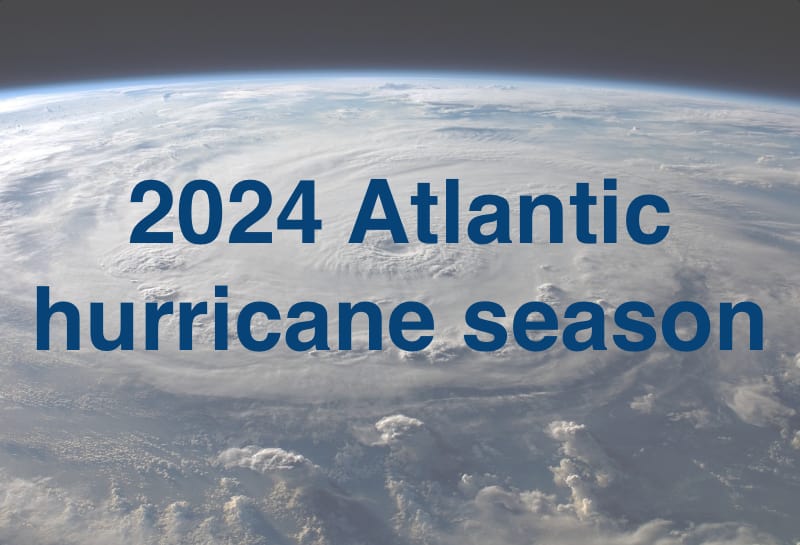TSR predicts “very active” 2024 Atlantic hurricane season

The first of the long-range forecasts for the 2024 Atlantic hurricane season has now been published and while these extended range outlooks should be treated as very broad guidance for what to expect, the team at Tropical Storm Risk (TSR) anticipate activity 30% above the near and 50% above the long-term norms.
Extended range forecasts for seasonal hurricane activity can be notoriously lacking in accuracy, but they can provide some visibility and insight into how climate conditions are evolving right now and what they suggest for the next hurricane season.
TSR said today that it predicts North Atlantic hurricane activity in 2024 will be “very active”.
The data in TSR’s report suggests that 2024 Atlantic hurricane season activity will be around 30% above the 1991-2020 30-year norm and around 50% above the long-term 1950-2023 norm.
These are some significant increases on average activity levels for a hurricane season and TSR breaks them down as below in its forecast for the 2024 hurricane season.
TSR calls for 20 tropical storms to form, 9 of which becoming hurricanes and 4 developing into intense or major hurricanes, driving an Accumulated Cyclone Energy (ACE) index of 160.
The forecaster says that there is a 53% probability the ACE index will be in the upper tercile (>156), a 39% likelihood the ACE index will be in the middle tercile (75-156), and only an 8% chance the ACE index will be in the lower tercile (<75).
TSR explained its reasoning, saying, “The reason why the TSR extended forecast for the 2024 Atlantic hurricane activity calls for ACE-activity above the 1991-2020 climate norm level is our current expectation that warm sea surface temperatures will occur in the Atlantic Main Development Region (MDR) and Caribbean Sea during August-September 2024.”
Warm sea surface temperatures have been a feature of the 2023 hurricane season, driving higher activity in terms of named storms than most forecasters had predicted.
At the same time, storms were largely not threatening to land and the ones that were ended up being far less impactful than had been feared by insurance, reinsurance and insurance-linked securities (ILS) market interests.
El Niño has been an important variable in the climate through the 2023 hurricane season.
It remains uncertain how much influence El Niño will have in 2024, or whether it could wane as some meteorologists have suggested.
Right now, some climate models suggest El Niño conditions will persist through the second-quarter of 2024, but potentially weaken beyond that, which would coincide with the start of the 2024 hurricane season.
Once again, with SSTs looking set to be elevated, ENSO a factor with some uncertainty attached, it looks like predicting 2024’s hurricane activity levels will be hard and we could see another season where the forecasts continually change as the June 1st start date approaches.






